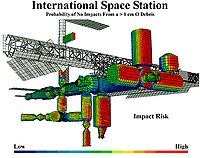
Photo from wikipedia
Personal risk detection refers to the timely recognition of situations that may jeopardise a person’s physical integrity, for example, during a fall or an accident. During this process, information obtained… Click to show full abstract
Personal risk detection refers to the timely recognition of situations that may jeopardise a person’s physical integrity, for example, during a fall or an accident. During this process, information obtained by monitoring vital signs and human activities is used to develop a mechanism capable of distinguishing between a person’s normal behaviour and a risk-prone situation. Such a mechanism is meant to be fully implemented in mobile devices with limited resources in terms of memory, processing power, and battery life. OCKRA (One-Class K-means with Randomly-projected features Algorithm), a one-class classification ensemble specially designed to detect anomalies in a person’s behaviour patterns, has been reported in the literature as the best algorithm in terms of accuracy in the context of personal risk detection. Experiments were performed using the publicly available PRIDE (Personal RIsk DEtection) dataset. However, reported training execution times seem prohibitive for mobile implementation. Our contribution is based on two strategies to reduce the execution time during the training phase of a one-class classification algorithm, aiming at its efficient implementation in mobile devices, and at the same time to maintain a good classification performance. The first strategy concerns the PRIDE dataset, for which we applied a filter-based approach to select its most relevant attributes. Eliminating attributes aids to identify sensors that can be turned off to avoid unnecessary data collection, thereby saving hardware resources. In the second strategy, we modified the internal structure of OCKRA based on the analysis of its design. Our proposed algorithm, called m-OCKRA, incorporates weighted attribute projection using filters to create data subsets for each classifier in the ensemble. Also, we reduced its computational complexity from $\mathcal {O}(n^{2})$ to $\mathcal {O}(n)$ . Our results show that m-OCKRA outperforms the original OCKRA version since the gain in execution time for training is almost an order of magnitude, and according to the performed statistical tests, the new algorithm preserves a good and equivalent classification performance.
Journal Title: IEEE Access
Year Published: 2020
Link to full text (if available)
Share on Social Media: Sign Up to like & get
recommendations!